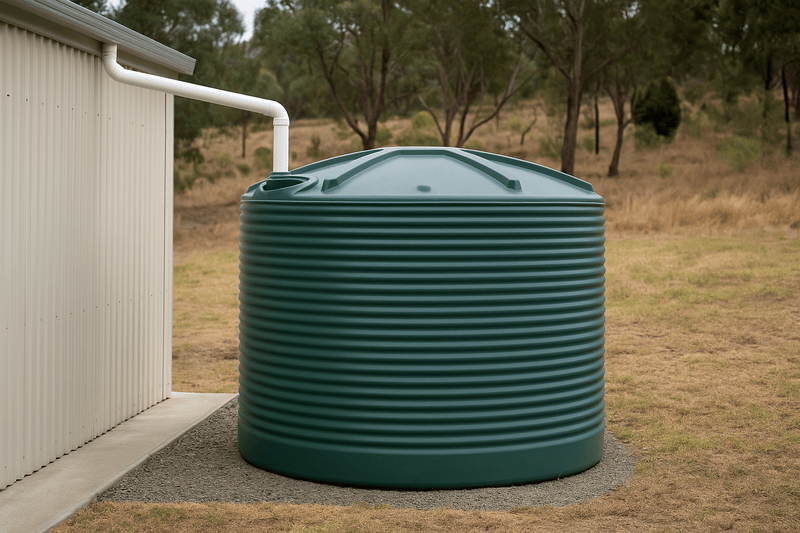
In Singleton, where summer heat peaks and water restrictions are common, rainwater harvesting isn’t just eco‑smart—it makes financial sense. Whether you’re upgrading your home, planning a rural build, or boosting your garden’s resilience, Rainwater Tanks Singleton offer a sustainable water supply right from your roof.
But choosing the right tank, understanding its benefits, and installing it properly takes more than casual research. Let’s dive into everything you need to know—from sizing and types to maintenance and local regulations—to help you make an informed decision. Along the way, we’ll explore how Rainwater Tanks Singleton – Cessnock Tank Works could help you, and reference helpful articles on storage tips and harvest systems from the local Bulletin.
Why Singleton Homeowners Are Turning to Rainwater
Singleton’s mix of rural acreage and suburban developments demands a smart water strategy. Here’s why it makes sense:
- Reduce your reliance on council water – Save on utility bills and avoid shortages during dry spells
- Eco-friendly landscaping – Use free rainwater to maintain lush gardens, wash cars, and top up pools
- Prepare for emergencies – Store water for fire-fighting and bushfire resilience
- Boost property value – Rainwater tanks are increasingly seen as desirable green features
For a growing number of households, Cessnock Tank Works for rainwater tanks singleton is where supply, knowledge, and service come together.
Choosing the Right Tank: Size, Material, and Placement
Rainwater tanks come in several varieties—each with its pros and cons depending on your needs:
- Material Matters
- Polyethylene (plastic) tanks: cost-effective, UV-resistant, ideal for non‑drinking purposes
- Steel tanks (galvanised or Colorbond): durable and suitable for potable use—just ensure proper lining
- Slimline tanks: fit neatly behind fences or along walls when space is tight
Your choice depends on available space, intended use, and budget.
- Size Smartly
Tanks range from 2,000 L to over 22,000 L. To size yours correctly, consider:
- Roof catchment area
- Local rainfall patterns
- Household water usage
- How often you’d want to rely on the rain supply
Blogrip’s guide on efficient water harvesting offers practical advice on calculating the right volume without over-investing.
- Placement and Run-off
Position your tank where it’s accessible yet unobtrusive. Plumbing and gutter connections must slope correctly; install a leaf filter and first‑flush diverter to maintain water quality.
How Tanks Improve Garden and Home Performance
A well‑planned rainwater system delivers more than free water—it offers resilience and reduced demand on town supply:
- Garden irrigation: Rainwater nourishes plants more naturally than chlorinated supply
- Toilet flushing and laundry: Some households offset 30–40% of town water by using tanks indoors
- Erosion control: Tanks collect roof runoff that might otherwise flood or erode soils
- Fire protection: A tank full of water near your home adds valuable buffer during bushfire season
For real-world impact, check out Blogrip’s case study on suburban sump conversion, which highlights practical installations in similar communities.
Navigating Council Requirements and Rebates
Installing a rainwater tank isn’t just about hardware—Singleton Council has its own standards, especially for potable systems:
- Tanks over a certain size or supplying inside toilets and kitchens usually require approval
- Overflow pipes and stormwater connections must be compliant
- Water captured for drinking needs certified fittings and backflow protection
Before you commit, it’s wise to speak with a local supplier. Explore our rainwater tanks singleton to find out about approvals, rebates, and site‑specific advice—designed for Hunter Region properties.
Maintenance Tips for Long-Lasting Performance
A tank is not “set and forget”. Proper care ensures water quality and equipment longevity:
- Inspect gutters and filters quarterly
- Clean sediment and flush tanks annually
- Check pumps and screens monthly during summer use
- Add mosquito screens and maintain sealed lids
- Drain before frosts if located above ground
Simple upkeep not only safeguards water supply but also maximises long-term savings.
How Much Can You Really Save?
Here’s a rough snapshot for a typical four-person suburban home in Singleton:
| Usage Area | Town Water Reduction | Estimated Annual Saving |
| Garden/Irrigation | 50 L/day | ~$400 |
| Laundry & Toilets | 80 L/day | ~$650 |
| Total | 130 L/day | $1,050–$1,200+/yr |
Savings depend on water pricing, rainfall, and water use habits. Many buyers recoup tank costs within 3–5 years—plus they gain durability during droughts.
Why Expert Installation Makes a Difference
DIY tank installs can work—but local landscapes bring risks. Partnering with professionals ensures:
- Correct plumbing and pump choice
- Compliance with Singleton standards
- Proper foundation and anchoring
- Access to rebates or permits
- Advice tailored to your home’s roof size and site condition
Cessnock Tank Works provides full support—from sizing to setup—making Rainwater Tanks Singleton – Cessnock Tank Works a go-to reference for locals seeking reassurance and compliance.
Final Word: Sustainable Water Starts at Home
In Singleton, where every drop counts, installing a rainwater tank is both a savvy financial decision and an eco-conscious one. It boosts your home’s self-reliance, reduces pressure on municipal sources, and makes your garden healthier—all on a lower water budget.
If you’re ready to explore which system fits your lifestyle and property, check out Rainwater Tanks Singleton – Cessnock Tank Works. With local experience and tailored advice, they help homeowners harvest rain with confidence and compliance.

Leave a Reply